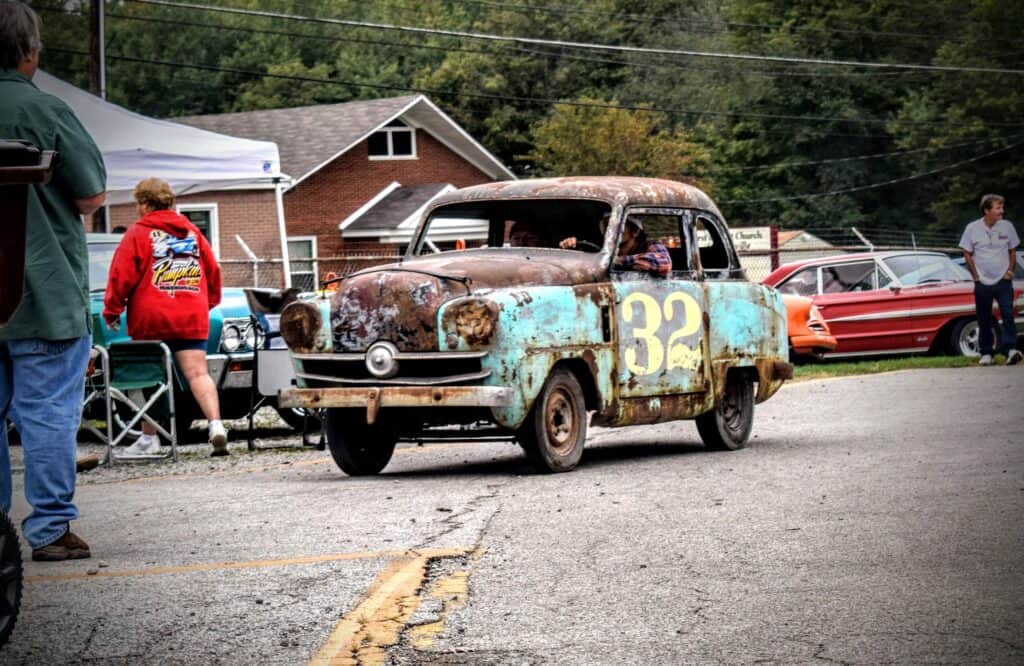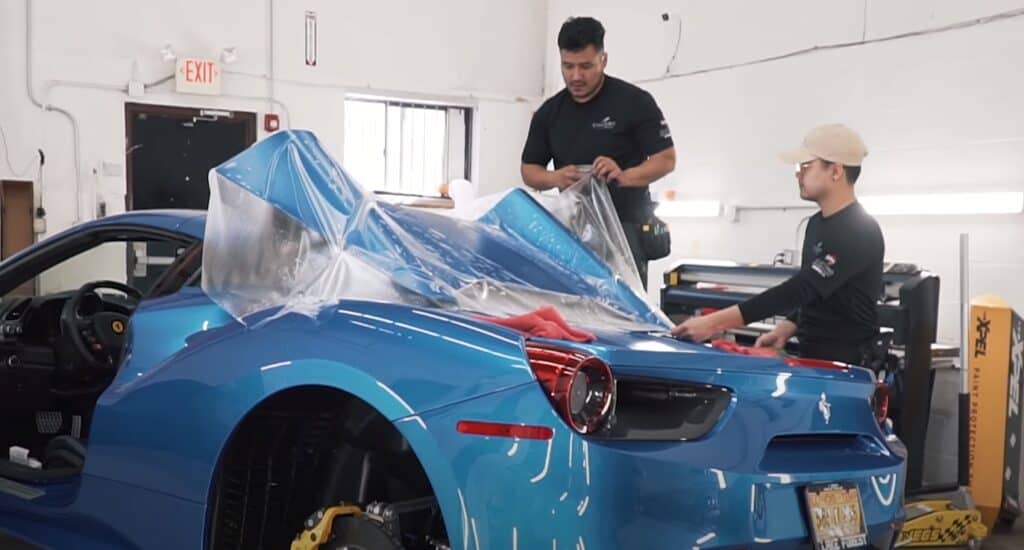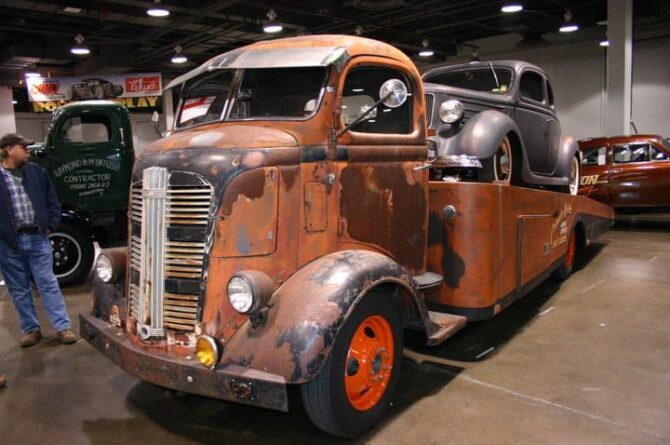Garages are one of those luxuries in life that either come highly coveted, or are completely underappreciated. But while humans may find a covered parking space to be incredibly useful, it is our automobiles that benefit from their presence the most.
According to energy.gov, nearly 63% of all occupied housing units has a garage or carport. However, when it comes to renting a garage-equipped home, only 37% of households have access to this luxury, as compared to the 78% of all home owners.
So how do you protect a vehicle if it’s parked outside? Are there any proven techniques for protecting paint from the effects of UV rays, acid rain, or the damages incurred during a wind storm?
While there are a handful of practical options out there, not all of them are what one might expect. In this AvalonKing blog article we’ll dive into some of the more mainstream methods of car protection, as well as a few of the more obscure ways vehicle owners are getting through life without garages.

What Are the Most Common Elements That Can Damage Your Car’s Paint?
Protecting your vehicle from exposure to harsh weather conditions and unpleasant contaminants is possible without a garage. It just takes a little ingenuity on the car owner’s end, and understanding that no matter what you do, your vehicle is eventually going to get damaged.
The exterior of the average daily driven vehicle comes into contact with an immeasurable amount of contaminants on a daily basis. From road salt and diesel exhaust soot, to natural contaminants like bird shit and bug splatter, the laundry list of crud that cakes onto our cars is both impressive and repulsive.
These, and many more environmental factors have been linked to everything from stains and discoloration, to clear coat oxidation, corrosion, and rust. For many vehicles, these contaminants and a multitude of others can impact painted, glass, plastic, and rubberized components at an alarming rate.
Here are a handful of the most common culprits.

UV Light
When it comes to paint damage, the sun is one of the first offenders. Our solar system’s star not only generates extreme levels of heat and light, but it also emits radiation, which over time can cause clear coat deterioration. Throw in some road debris, exhaust soot, and a pinch of acid rain, and the sun’s ability to “nuke” whatever its UV rays touch turns an automotive clear coat into a hazy hot mess.
Quick Tip: Being proactive, and washing your vehicle every other week can greatly increase your ability to negate the damages incurred by UV exposure. Throwing paint protection products, like Armor Shield IX, on the vehicle afterwards further increases your chances of deflecting those nasty UV rays.

Road Grime and Smog
There’s no nice way of saying it. Smog sucks. Thanks to the inefficient combustion of the carbon-based materials that fuel our engines, this unburned particulate matter has become one of the world’s most notable pollutants. And guess what? It wants to fuck your clear coat up in the worst possible way.
Smog isn’t the only carcinogen-rich crap we have to contend with either. From the tar balls being kicked-up on the interstate, to the corrosive chemicals encapsulated within deicers, and the liquids leaking from the car in front of you, it’s all bad news for your automobile.

Natural Elements
Man-made materials aren’t the only clear coat and paint destroyer either. Mother Nature can be quite the nefarious bitch as well. Birds don’t give a squawk about where they dump their fecal matter, and bugs, well let’s just say that these little critters offer more splatter than an episode of Nickelodeon’s “Double Dare.”
Bird droppings are particularly rich in acids and digestive bile, especially if the avian specie eats things like pigment-rich wild berries and bugs. Speaking of insects, bug guts are also highly acidic, and once allowed to cure upon a surface can eat into a clear coat at an alarming rate.
But wait, there’s more! Salt water, tree sap, pollen, acid rain, hail, and wind-blown debris all want to shit on your car, even when you are asleep inside your house.
So what do you do if the protection of a garage is unobtainable? You get creative and do whatever you can to protect that automobile, with the following suggestions being a few of the more effective methods.

Products to Protect Your Car Without a Garage
Outside of paying for covered parking at a garage, the most obvious outdoor vehicle storage options either require the purchase of a portable carport, or a car cover of some sort. While both of these options do warrant consideration, they also come with their own inconveniences.
But the daily removal and replacement of a car cover is both time consuming and tedious, and pre-fabricated carports are notorious for becoming disjointed in windy weather. This is precisely why more and more garage-less individuals have turned toward paint protection products like nano ceramic coatings.
Quick Tip: If zoning in your area allows it, and you have the space, a decommissioned shipping container makes for a solid garage alternative. Just check with your local municipality’s zoning regulations and your HOA first, and be sure to search for a wide diameter container to avoid dinged doors and whatnot.

Paint Protection Products Ranked Mildest to Wildest

Natural Carnauba Wax and Synthetic Car Wax
Old school car experts may swear by natural carnauba wax. But for as affordable and easily obtainable as these clear coat protective products may be, these palm tree derived products offer very little in the scratch protection and longevity department.
The same can be said for synthetic variants, which are prized for their shine and gloss, but are just about as worthless as a butter knife in a gun fight when the long-term paint protection chips are down.
Automotive waxes only last for a few months before requiring removal and replacement. So if you enjoy constantly fretting over your vehicle’s clear coat this is the garage alternative for you.

Ceramic Coating Sprays
Coming in just one step above the old fashioned car wax, is the ceramic coating spray. These are products that are intended to be sprayed on top of a vehicle’s surfaces, allowed to sit for a moment, before being wiped away with a clean microfiber cloth before being buffed off with a finishing towel.
While many of these products do indeed contain many of the core ingredients that make a quality ceramic coating kick-ass, they favor ease of application over longevity. This is partially due to their surprisingly low silica (SiO2) percentage levels, which typically hovers in the 15% range.
It is this key ingredient that gives a nano ceramic coating the ability to withstand the elements for years on end. So the low SiO2 numbers associated with the average spray-on ceramic product means that they only hold-up for a few months before requiring removal and replacement.

Paint Sealants
The next level up from spray-on ceramic coatings, is a synthetic creation called a paint sealant. This polymer-based paste is essentially car wax on acid. Formulated to provide a thin layer of protection that hardens and lasts for about a year, paint sealant products can be applied in a similar fashion as car waxes and liquid polishes.
On the downside, there is quite a bit of additional prep work that must be implemented before a paint sealant can fully cure. You also must remove a paint sealant in its entirety prior to reapplication, a procedure that DIY minds and pros alike find to be both tricky and time-consuming.
Ceramic Coatings
Nano ceramic coatings are without question the most cost effective and potent paint protection product out of the lot. Blending concentrated amounts of silica dioxide (SiO2) with liquid polymers, high-end ceramic coatings rely upon a form of nano-technology to penetrate the invisible imperfections found on hard, porous materials. The result? One hell of a hard, water-shedding transparent exoskeleton.
Not only does this stuff reject UV rays, dirt, debris, bird droppings, and smog, but it also resists scuffs, clear coat scratches, graffiti, and your drunk uncle’s crude humor. Just kidding. We don’t think anything can help shield you from that bullshit.
Anyhoo…
Before we move on to the next option in our list of garage protection alternatives, there are a few things that you must know about ceramic coatings. For instance, there are a plethora of different ceramic coating products out there for you to choose from, so for the sake of time we’ll just focus on the two most common methods of applying this product.

DIY Nano Coatings
Probably the most cost effective form of ceramic coating, is the DIY nano ceramic coating. Typically sold in highly concentrated, super small bottles, this hand-applied product runs anywhere from $20-150 on average, and can be purchased at a multitude of online and brick-and-mortar locations.
While ceramic coating surface preparation definitely takes some elbow grease and patience, the application of a nano ceramic coating is super straightforward. All it takes is a few drops on an applicator cloth, some side-to-side spreading across the surface, a quick hand buff with a fresh microfiber towel, and ZINGO! …done.
Just be forewarned. There are multiple grades to DIY nano ceramic coatings, so do your research, read reviews, and don’t just look for the cheapest product on the market. It costs a pretty penny to engineer and produce this stuff, so while a cheap option may seem tempting, it probably won’t work well, will be difficult to apply, and/or won’t last long.
Quick Tip: Always buy a nano ceramic coating that’s backed by a lengthy warranty. Armor Shield IX, for example, lasts between 2-5 years on average, and is covered by a two year guarantee via AvalonKing’s warranty program.

Professional Grade Nano Coatings
The other ceramic coating option are professionally applied products. These kinds of nano ceramic coatings cannot be purchased by the public, and are only made available to licensed installation professionals who have completed certified training seminars.
The reason for this is because most pro-grade ceramic coatings contain an extremely high level of SiO2, with certain products boasting percentages well above 90%! This makes them super resilient, but also really damn difficult to apply.
So while professionally installed ceramic coatings may claim to be the longest lasting, strongest nano ceramic coating products on the planet, they are also the most expensive. Sure, a brand-new garage is going to be quite a bit more expensive, but renting a garage space down the street is more than likely going to be far less pricey.
Quick Nerd Note: While ceramic coatings may be widely recognized for their ability to protect things like car paint, this space age stuff really got its start amongst the stars. NASA was the nano ceramic coating mastermind that first brought hydrophobic nano-technology into the mainstream. The space agency discovered that a ceramic coating’s moisture-wicking properties could protect silicon based ceramic engine components from things like condensation build-up and extreme heat.

Paint Protection Films (PPF)
At one level (or ten) above everything else on this list, paint protection film is just as hardcore as it is extravagant. Do these super tough clear coat covers do an outstanding job of protecting a vehicle from the elements? Without a doubt. Are they insanely expensive and therefore labeled as unobtainable by the masses? Yup.
Simply put, a PPF product install costs so much, that chances are you could build a garage for the same amount.

Parting Shots
So if you don’t have a garage, and have zero interest in spending some extra dough each month on storage options, there are some alternatives out there. Unfortunately, the frustration associated with car covers and pop-up garages are too numerous, and most paint protection coatings aren’t worth a shit, or are entirely too pricey.
This is precisely why we invented Armor Shield IX. A high-quality, 9H-rated DIY nano ceramic coating that can stand-up to the elements, that lasts for years before requiring replacement.













5 comments
Stephanie Neogra
I purchased this and then after reading the instructions I realized that I need to have my car kept in a garage for 48 hours for it to cure. I do not have access to a garage at all do you have any other advice on how I could still use this product without having to put my car in a garage?
I purchased this and then after reading the instructions I realized that I need to have my car kept in a garage for 48 hours for it to cure. I do not have access to a garage at all do you have any other advice on how I could still use this product without having to put my car in a garage?
Dale Pearl
Hello Catherine!
Armor Shield IX is only available from our website.
Hello Catherine!
Armor Shield IX is only available from our website.
Catherine Welch
I just bought a red charger. I want 2 keep it looking new. 💯 is there a place n my area where I can get this “shield”?? Also bcuz it’s new should I wait 2 have this done? This was very informative.
I just bought a red charger. I want 2 keep it looking new. 💯 is there a place n my area where I can get this “shield”?? Also bcuz it’s new should I wait 2 have this done? This was very informative.
Timothy Artis
I’ll be waiting for my care Pkg.
I’ll be waiting for my care Pkg.
Dan
Thank you. Very helpful!
Thank you. Very helpful!